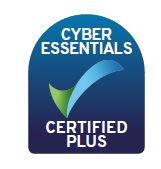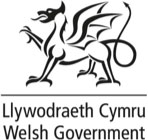
Safer Internet Day – how to recognise and avoid misinformation and disinformation
Safer Internet Day promotes the safe and responsible use of digital technology.
This year, it’s focussing on online scams, and the best ways to protect yourself and others, especially young people.
Cwmpas is delivering a programme on media literacy in Rhondda Cynon Taff, south Wales, on behalf of Ofcom. It’s part of Ofcom’s three-year Media Literacy Strategy.
Media literacy means being able to ‘use, understand and create media and communications’, and includes helping people to access media they trust and value, and to live a safer life online.
With so much news appearing online, and on so many channels, it can be difficult to know whether the information you’re reading or watching is accurate and fact-checked.
In this project in Rhondda Cynon Taff, we’ve been helping both young people and older people, individuals not in education and employment, and individuals with accessibility requirements, to recognise trustworthy news sources, and how to avoid sharing fake news.
Here’s Cwmpas’s advice on distinguishing fact from fake.
News comes from multiple sources. Government departments, public sector authorities, private sector companies, charities and third sector organisations like Cwmpas, and news agencies.
They all distribute news items through multiple channels, all day, every day.
Journalists and influencers report on that news.
All professional journalists check details and confirm the accuracy of the news reports they produce.
That means that the major print newspapers, and their online and broadcast channels, all pledge to issue only trustworthy, fact-checked news.
The statements they issue can be proved using evidence or observation. Those are facts. They can be checked. They aren’t influenced by someone’s feelings or beliefs, and they are consistent no matter who is talking about them.
An opinion is a personal belief which reflects someone’s feelings. They are perfectly valid, but they can’t be proved true or false, and different people might have different opinions about the same topic.
Misinformation is information which is false or inaccurate, but the person sharing it doesn’t intend to deceive or cause harm.
If you share news from a social media post which isn’t accurate, you’re spreading misinformation, even if you don’t mean to tell untruths. That’s why it’s so important to make sure that you only share news from sources you can trust.
Disinformation is false or misleading information which someone deliberately creates with the specific intention to deceive or manipulate people.
People who spread disinformation use lies to manipulate public opinion, or to cause harm to other people.
Here are some red flags to help you spot and avoid sharing misinformation and disinformation:
- Only read and share information from sources you can trust.
- If it seems too extreme or sensationalised to be true, it probably isn’t true.
- Does the article give facts, figures and evidence backed up by links to other sources? If yes, check the source to make sure the details are true. If no sources are given, the details may well be made up.
- If the language is very provocative or shocking, the article probably isn’t true.
- Headlines with ALL CAPITALS, Random Capitals, lots of punctuation!!! or words like Shocking! or Secret! are red flags: these articles are probably disinformation – avoid them.
- If a big story is only covered by one news outlet, it may be false. Reputable news stories would probably appear in multiple outlets.
- Are there spelling mistakes or errors of grammar in the news story? If yes, it probably isn’t true.
- Images which look edited are a red flag – avoid articles with images where the shadows look wrong or seem manipulated.
- Check the date on a news story. Sometimes old or outdated information is shared as if it’s today’s news to create a backlash or influence an emotional response.
- Think about why a piece of information is being shared. Is it trying to sell something, or stir up an emotion to promote a political agenda, or is it ‘click-bait’? If there is a sinister or untrustworthy motive behind a piece of news, don’t trust it.
- Use a trusted fact-checking website like Full Fact, PolitiFact or FactCheck.org to check information in a news item.
Pause before you share that piece of news. Are you sure it’s true and accurate? If not, don’t share it.
If you follow the advice above, you can be as sure as possible that news is trustworthy, and that you aren’t spreading misinformation or disinformation.
Cwmpas is partnering with Shout Out UK, AbilityNet, Rhondda Cynon Taff County Borough Council, Age Connects Morgannwg, and Newydd Housing Association, helping individuals to understand how to create and share information responsibly, and how to identify misinformation and disinformation.
If you’d like to take part in one of our workshops or find out more about our Media Literacy Programme in Rhondda Cynon Taff, please contact samina.ali@cwmpas.coop.









